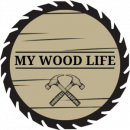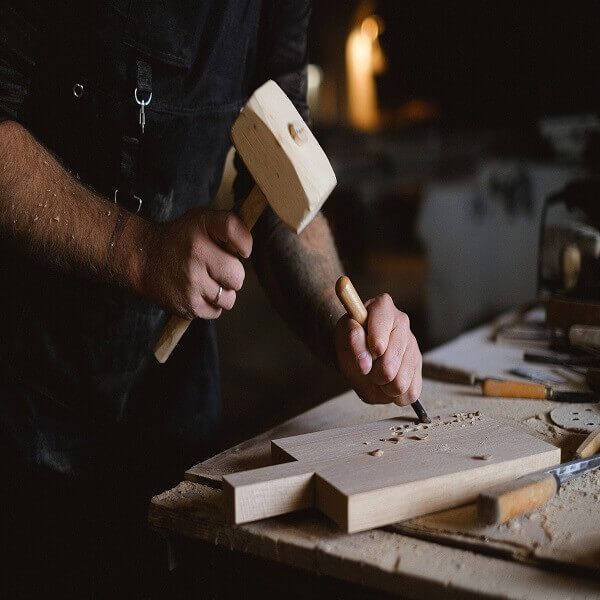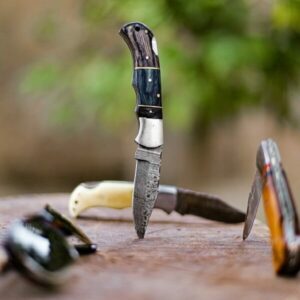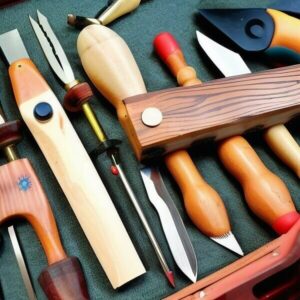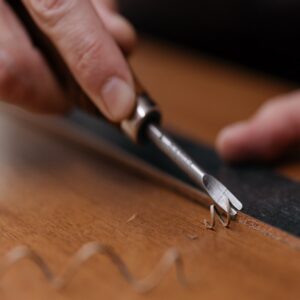If you’re interested in learning wood carving, there are a few things you should know before getting started. In this blog post, we’ll share some essential tips for beginners to help you get the most out of your learning experience. Whether you want to carve for fun or create beautiful works of art, these tips will set you on the right path. So, grab your tools and let’s get started!
First Of All, You Need To Understand The Basics of Wood Carving
Before you start carving, it’s important to understand the basics of wood carving. This includes understanding the different types of wood and their characteristics, such as grain direction, hardness, etc.
It also means familiarizing yourself with basic techniques like relief carving and chip carving. Taking some time to learn these basics before beginning your project will help ensure success in the long run.
Invest In Quality Wood – Soft Wood Is Recommended
It’s important to invest in good quality wood when learning wood carving. Softwoods, such as basswood or balsa are generally easier to work with and require less force than harder woods. You should also pay attention to the grain of the wood since this can affect the finished product significantly.
Choose The Right Tools For The Job
As a beginner in wood carving, it is essential to select the right tools for the job. A dull knife or tool can be inept and dangerous; thus, it is important to always use sharp tools while carving. At a minimum, you should consider investing in good-quality knives, chisels, and gouges to get started.
Make sure to buy the highest quality woodworking tools available so that they will last throughout the years of crafting beautiful sculptures from wood. With the correct selection of well-crafted tools, one can begin their journey into learning the art of wood carving with satisfaction and contentment.
Choose a Project That Fits Your Level
When you first start out, it’s important to choose a project that is realistic for your skill level and tools. Start with something simple like a spoon or bowl before taking on more complicated projects. This will help you build confidence in your abilities as well as give you an understanding of the fundamentals of wood carving.
Practice Makes Perfect
When it comes to wood carving, practice makes perfect. Spend time familiarizing yourself with the tools and learning how to use them safely and correctly. Start with small blocks of wood and gradually move on to more complex pieces as you gain confidence in your abilities. With enough practice, you’ll be able to create beautiful works.
MY TIP: take a piece of wood and practice making simple shapes and designs on it to get comfortable with the tools, also practice on the grip of the tools.
Developing Good Carving Habits: Posture and Grip
It’s important to develop good carving habits when learning wood carving. Proper posture and grip are essential for both safety and efficiency. Make sure your feet are planted firmly on the ground and keep your back straight so you don’t experience any pain or discomfort while working.
Also, make sure that you’re holding the tool correctly – your palm should be facing down while gripping and your fingers should be spread out. This will help you control the tool better, resulting in smoother cuts and a more professional-looking finish.
Finally, make sure to take regular breaks if you’re feeling tired or uncomfortable. Carving can be very demanding on the body, so taking care of yourself is important for your
Take Care Of Your Tools
Just like any other craft, taking care of your tools is essential for successful wood carving. Make sure to clean and sharpen your tools regularly and store them in a safe place when not in use. Additionally, make sure you always wear protective gear like gloves, eye protection, and a face mask when working with wood.
Adding Finishing Touches: Sanding and Sealing Your Wood Carvings
Once you have finished carving your piece of wood, it’s time to add the finishing touches. Sanding and sealing can help make your project look more professional and will also help protect it from wear and tear over time.
Start by sanding lightly with a fine grit sandpaper or steel wool until all the sharp edges are rounded off. From there, you can choose to seal your carving with a wood finish of your choice.
Safety First
Safety is always the most important thing when it comes to wood carving. Always wear protective gear and use caution when working with sharp tools. Be sure to keep your workspace clean and free of debris, and never work on a project while tired or distracted. If you follow these simple tips, you’ll be able to safely create beautiful sculptures from wood.
Conclusion
Wood carving is a rewarding and fulfilling craft, but it requires practice, patience, and safety. Start with high-quality tools and choose projects that fit your skill level. Practice regularly to build confidence in your abilities and take care of your tools. When you’re finished with a project, use sandpaper or steel wool to round off the sharp edges and seal your carving with a wood finish of your choice. With the right approach, you’ll be able to create masterpieces in no time!

